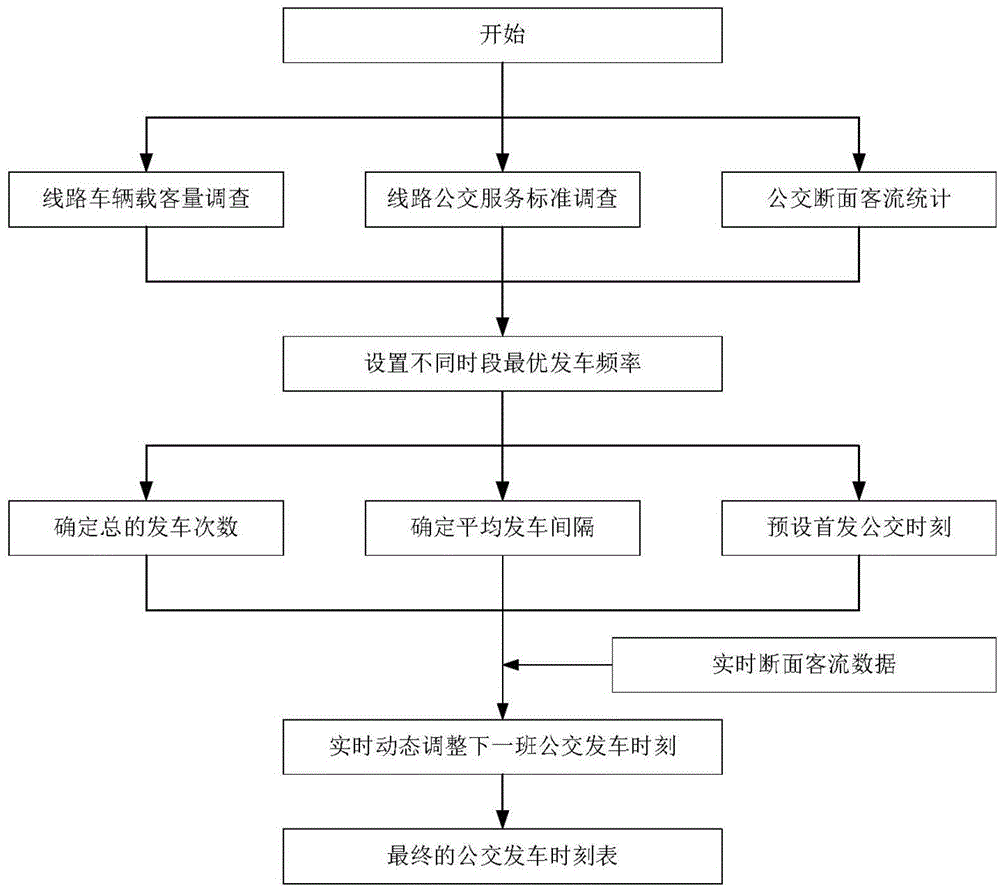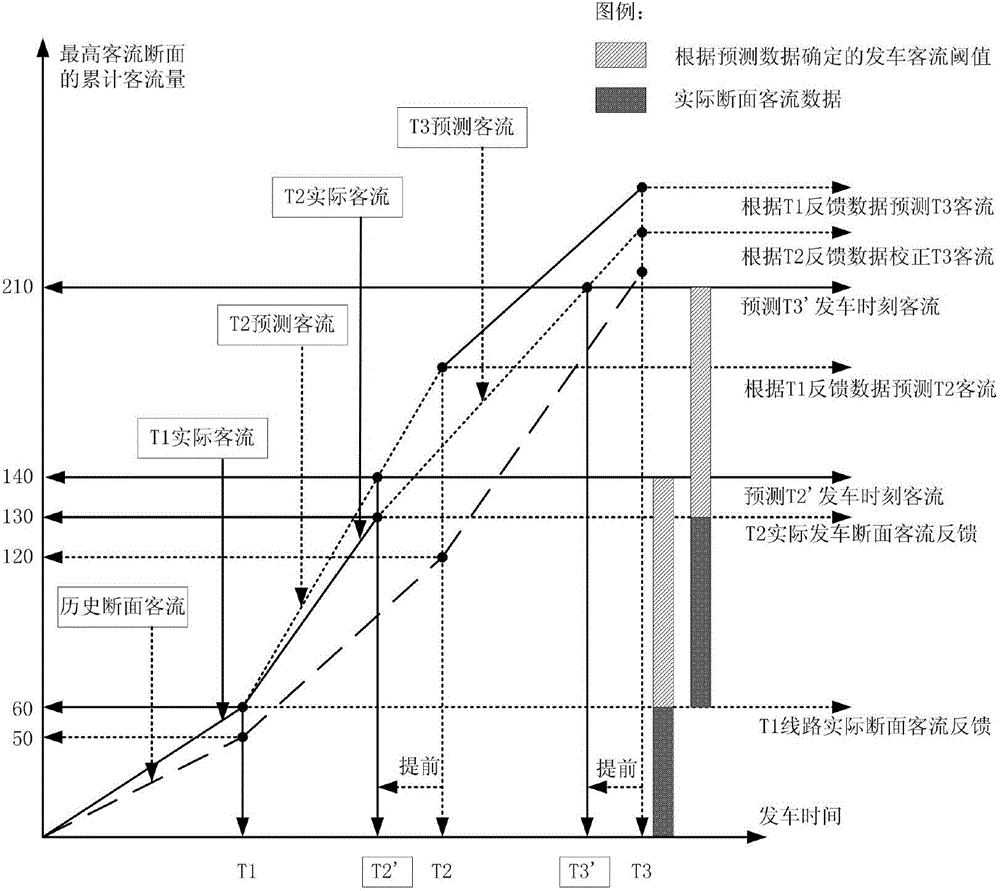Self-adaptive dynamic optimization method for bus dispatching timetable
A dynamic optimization and self-adaptive technology, applied in traffic control systems, road vehicle traffic control systems, instruments, etc., can solve the problems of long waiting time for passengers, crowded buses, waste of social resources, etc.
- Summary
- Abstract
- Description
- Claims
- Application Information
AI Technical Summary
Problems solved by technology
Method used
Image
Examples
Embodiment Construction
[0035] Below in conjunction with accompanying drawing, the present invention will be further described:
[0036] Because in the "dynamically adjusted departure time mode", the first thing to determine is to determine the optimal departure frequency in different periods based on the historical cross-sectional passenger flow data, and then continuously update the bus departure time at the next moment according to the real-time feedback cross-sectional passenger flow data.
[0037] A. Determine the optimal departure frequency
[0038] The evaluation standard of bus departure frequency generally uses the maximum allowable congestion of bus vehiclesγ s And the longest waiting time that passengers can endure under the lowest service level (or the maximum departure interval that passengers can bear) t m . In the present invention, the goal of optimal departure frequency is to ensure the service quality of bus operation on the basis of the least number of vehicles in operation.
[00...
PUM
 Login to View More
Login to View More Abstract
Description
Claims
Application Information
 Login to View More
Login to View More - R&D
- Intellectual Property
- Life Sciences
- Materials
- Tech Scout
- Unparalleled Data Quality
- Higher Quality Content
- 60% Fewer Hallucinations
Browse by: Latest US Patents, China's latest patents, Technical Efficacy Thesaurus, Application Domain, Technology Topic, Popular Technical Reports.
© 2025 PatSnap. All rights reserved.Legal|Privacy policy|Modern Slavery Act Transparency Statement|Sitemap|About US| Contact US: help@patsnap.com



